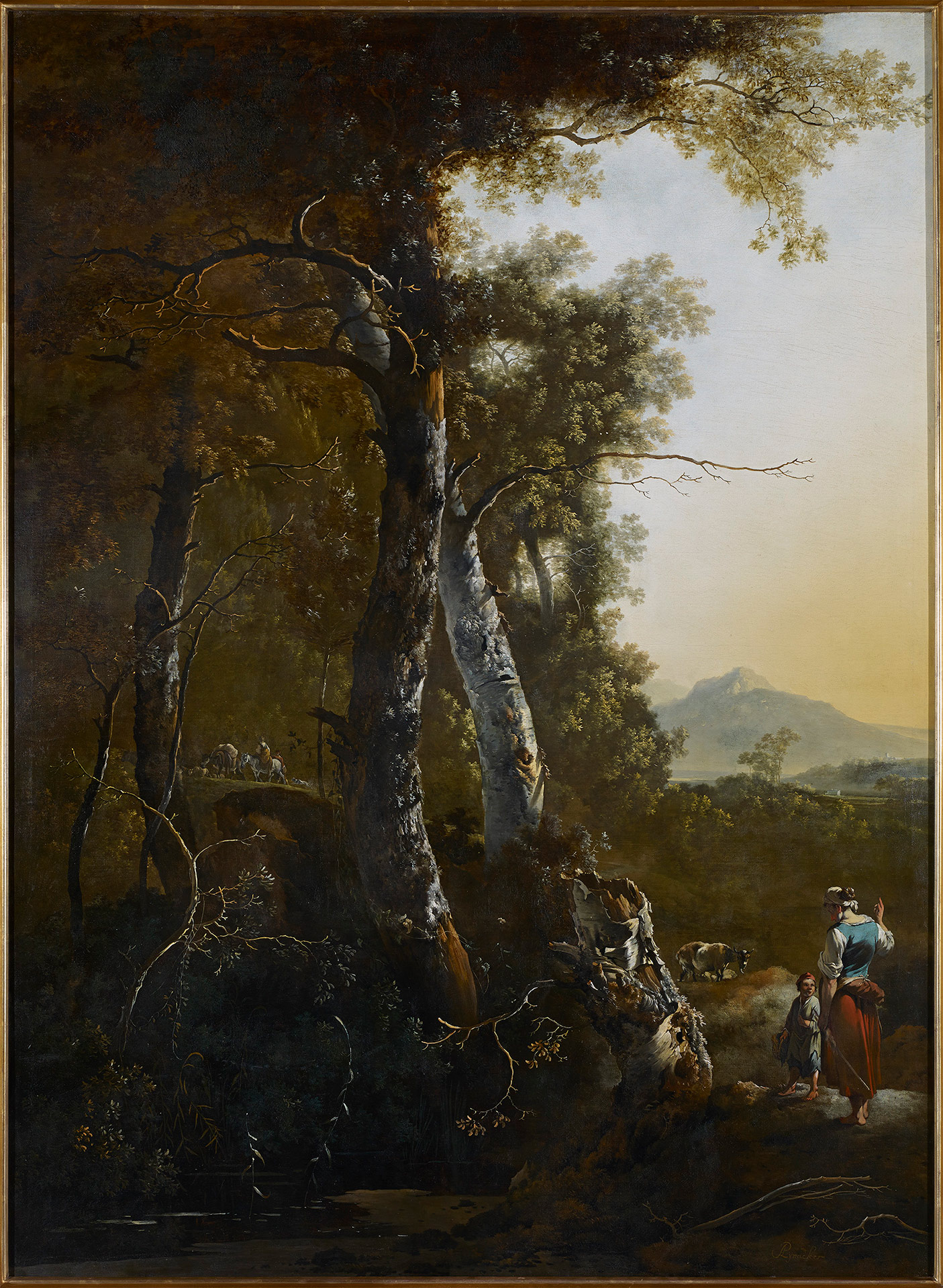
Adam Pynacker (Scheidam, Netherlands, ca. 1620 – Amsterdam, ca. 1673)
Landscape with Shepherds
Circa 1660
WORK INFORMATION
Oil on canvas, 220 x 159 cm
OTHER INFORMATION
Signed in the lower right-hand corner: "APÿnacker" ("AP" as a monogram)
Dutch painting in the 17th century was a competitive world, with very high production levels and an equally high average standard of quality. One of the most commercially successful genres was landscape art. Numerous artists sought to carve out a niche in the market by specialising in different types of views. One of the most popular was known as "Italianate" landscapes. This work and its author, Adam Pynacker, offer us a splendid example of this speciality. His paintings are among the most delicate and evocative Dutch landscapes of the 17th century.
Pynacker was born in the port town of Scheidam and, according to Houbraken's book De groote schouburgh (1718–1721), he spent three years in Italy from 1645 to 1648, although no records have been found to corroborate this fact. He spent most of his career in Amsterdam.
Pynacker's first known paintings date from 1650. In them we can already see the influence of Jan Both and other members of the first generation of Dutch painters to specialise in views with an intense, Italian-inspired light. Pynacker is characterised by the combination of distant vistas with foregrounds in which the details, such as tree trunks, are painted with great precision. As in this work, he usually situated intertwining trees in the foreground, pushing the mountain landscapes into the distance. His mature works, from around the late 1650s onwards, are also marked by the contrast between a dark foreground and strong golden light flooding the landscape in the background, which we also see in this painting. The shepherds in the foreground and among the trees add a picturesque touch to the scene.
Pynacker's landscapes allowed the Dutch elite to imagine the Italian countryside. The most important aspect of these scenes was their power to evoke the idea of Italy in the northern viewer's mind, a land they associated with fair weather, vast and rugged nature, and the historic past.
We do not know the early history of this painting, which was recorded for the first time in 1948 on the London art market. It was painted on herringbone weave canvas and was restored in 2014 by María Antonia López de Asiain. [Alejandro Vergara]

